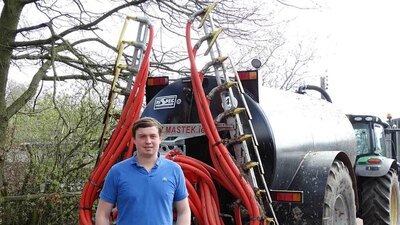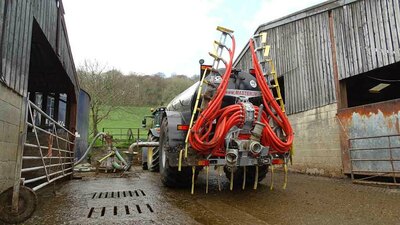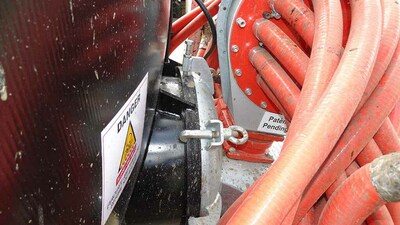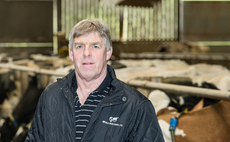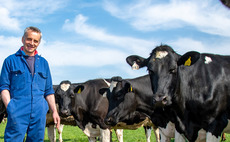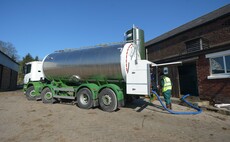
Increasing output of slurry application, while keeping farmers and neighbours happy is a finely balanced conundrum.
However, for one contractor, a relatively low-cost dribble bar has achieved just that.
Finding a niche in the world of contracting is hard - and even harder when specialising in the competitive world of slurry spreading.
However, one contractor has managed just that, using a fairly traditional setup.
Sam Smith, partner in Jackson Pumping, based in Dinton, Buckinghamshire, says providing a service tailored to his customers is paying dividends.
The company was purchased by Mr Smith and his business partner nearly four years ago, with most customers staying loyal to the new owners.
However, Mr Smith says smaller farms in the area were not well catered for, with competing contractors turning to larger and higher output machinery, not suitable to the typically tight yards he now operates around.
He says: "Even with our setup, which by today's standards is small, yards are tight and often have low hanging cantilevers, requiring us to keep our wits about us."
Continuing his sizeable umbilical operation, Mr Smith went on the hunt for a setup that would enable him to get into yards that wanted slurry spreading further afield, often on arable land.
Most of the spreading workload is made up of cattle slurry and solids, along with some work for anaerobic digestion units and pig farms.
A solution to this came earlier in the year when the company took delivery of a new HiSpec 2600 11,500-litre, single-axle tanker fitted at the rear with a 7.5-metre Mastek universal dribble bar, now towed by the company's four-cylinder John Deere 6130R.
A number of considerations were made before purchasing the setup, but doing the job in a timely, responsible and orderly fashion were the main factors, something the Mastek dribble bar is highly praised for by Mr Smith.
Quality
Although one of the more walletfriendly dribble bars on the market, price was not an influential factor
for Mr Smith, who says the quality of it justifies its ticket price.
Key to his decision to opt for the Mastek unit was the size of its SuperCut macerator.
When comparing with other macerators, he says the overall dimensions of the Mastek unit was a deciding factor. Coupled to this, the low maintenance requirements of the six circular cutting blades also impressed.
Access into the macerator in the event of a blockage is simple too, he says, by undoing two bolts.
"If the macerator can stand up to Irish conditions, where there is a lot of very fibrous slurry from baled silage and straw bedding, I am sure we will have few issues," he says.
"My only concern was how it would cope with woodchipbedded farms, but so far, we have had no issues."
The design of the Mastek unit means it is transferable between most tankers, as it simply bolts on to the tank, in place of the access hatch. The 450kg unit when folded up sits within the width of the tank and stands at 3.5 metres tall.
Nimble
The overall setup has impressed him so far, with the tractor providing just enough power to keep on top of the job, while remaining nimble enough to get around tight yards.
The tanker is also living up to expectations. Mr Smith says the determining factor for opting to go with the HiSpec was the overall ride height, opting for the recessed axles, bringing the centre of gravity lower, making crossing slopes safer.
It also fits the widest tyre the company offers, at 800mm providing a light footprint, even when fully loaded.
This nimble and lightweight setup has enabled the company to expand its spreading presence, and complete further afield jobs in a quicker and more efficient manner.
Mr Smith attributes much of the efficiency to the increased capacity the dribble bar has offered.
He says keeping neighbours local to farms ‘on side' is important to him, and the dribble bar is helping to achieve this, in part by keeping smell down and offering greater capacity to spread when the conditions are right, limiting mud being brought onto the roads.
